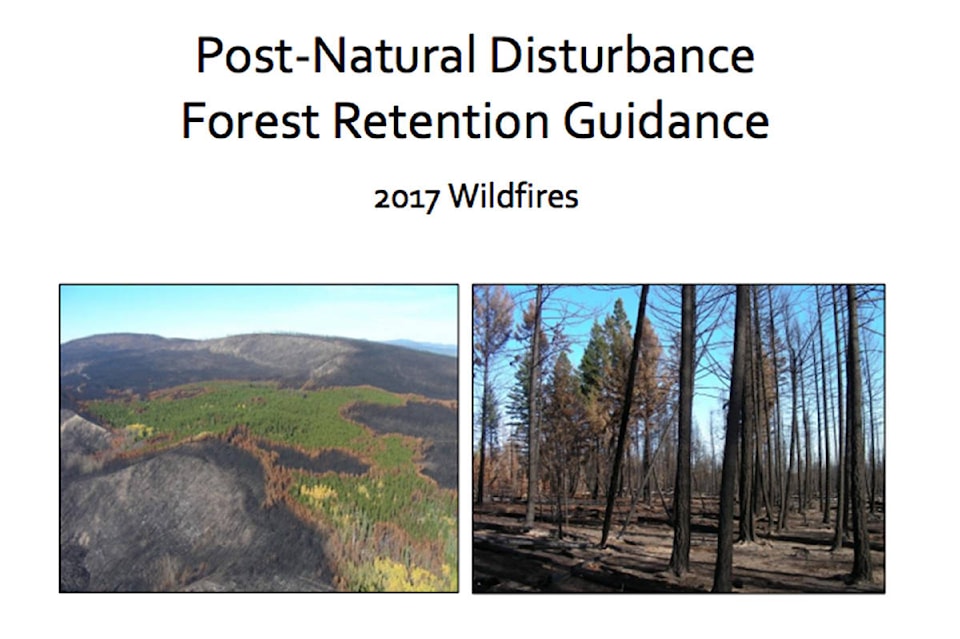Office of the Chief Forester
VICTORIA - In the wake of the unprecedented 2017 wildfire season, the Ministry of Forests, Lands, Natural Resource Operations and Rural Development is providing additional guidance to professional foresters and licensees to support salvage-harvest planning.
About 700,000 hectares of land containing merchantable timber was burned to varying degrees during last year’s fire season. Burned timber deteriorates in quality quite quickly, so licensees are focusing existing harvesting operations to retrieve maximum economic value from burned areas. Licensees are legally required to reforest the areas that they harvest, and harvesting the burned timber quickly will speed up the regeneration of those areas.
Forests (even burned ones) provide important values that need to be protected. The 26-page “Post-Natural Disturbance Forest Retention Guidance: 2017 Wildfires” document focuses on protecting important natural-resource values, such as wildlife habitat, water quality and soils. (“Retention” refers to the need to ensure that forest cover is reserved from logging in burned areas where doing so protects these non-timber values.)
The guidance document supplements existing regulatory requirements.
The principles and advice outlined in the document are applicable to other large-scale disturbances (e.g., landslides, floods, avalanches, mountain pine beetle infestations). The destructive impacts of events like these warrant a focused approach to the recovery of affected areas.
The “Post-Natural Disturbance Forest Retention Guidance: 2017 Wildfires” document builds on six main priorities:
* Ensure human safety and minimize damage to built infrastructure.
* Sustain, restore or enhance the capacity of ecosystems.
* Consider the collective disturbance on the landscape to mitigate cumulative impacts.
* Facilitate the adaptation of forests to improve their resilience to climate change.
* Minimize impacts on timber supply by shifting logging activity from undamaged stands to damaged stands, wherever possible.
* Recover value from burned timber before the quality of the wood deteriorates.
This document highlights the importance of working carefully in areas affected by wildfires. It provides a sound framework for harvesting timber responsibly.
Learn More:
The “Post-Natural Disturbance Forest Retention Guidance: 2017 Wildfires” document is available online: https://www2.gov.bc.ca/gov/content?id=A938D12D079B4B998DF27E2C9036A626
newsroom@clearwatertimes.com
Like us on Facebook and follow us on Twitter
